Following on from my Mexican Village on a Giant Cactus project, there are many themes I want to explore further using this concept. The cozyness of a village by twilight in a white Christmas can only be made cozier by having the village built along a giant pine tree, complete with its own giant baubles.
Inspiration
Though I had the idea to begin this piece well before last Christmas, Mohamed Chahin’s own Christmas themed village was a major inspiration. My building designs were primarily based on his, with me filling in the rest of the details.
Features
Houses
The village houses are built like an assembly line where there are a few basic house shapes, window designs, doors, and chimneys. However, assembling these in different combinations (and mirroring certain objects) can create sufficient variety to make the houses look unique.
Details
Among the houses, you find each town centre’s own Christmas tree, a snowman or two and candy cane street lamps. The tree also has its own giant red, green, blue, gold, and yellow baubles. According to one of the passengers on the train, Krampus was spotted clinging onto one of them, lurking around between villages.
Santa’s Workshop
Ever the industrialist, Santa has automated his present creation process with his famed workshop now a full blown factory, complete with candy cane smoke stacks. Presents now pump out of a chute straight into his sleigh. This has freed up his time to monitor the world’s children (and the increasingly unionising elves) from his surveillance room. Unfortunately, he also seems to have not noticed his reindeer escaping with Rudolph breaking down the fence of his pen, and Prancer climbing to the roof of the factory.
Railway
The locals get around by climbing on the foliage and branches of the tree. However, out of town visitors, and some of Santa’s freight can take the Polar Express to the top of the tree on the world’s most questionably engineered railway track.
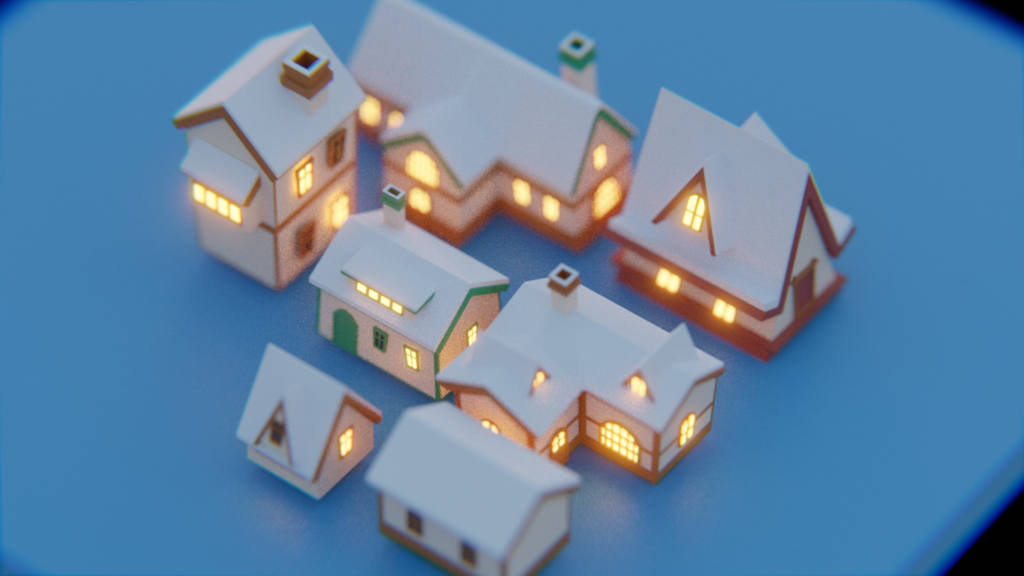
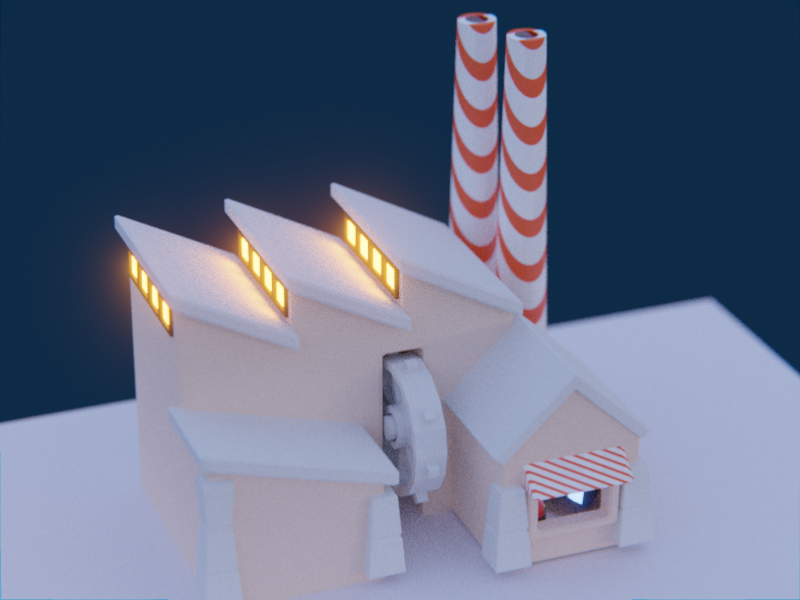
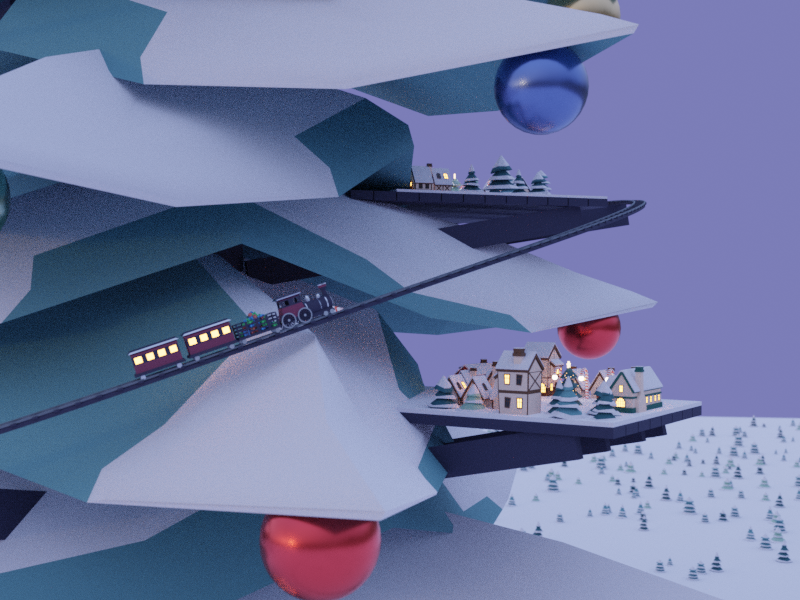
Style and Finishing
The modelling style isn’t exactly low poly, nor fully detailed. Instead, I took cues from another great 3D artist Gustavo Henrique. His buildings are incredibly well rendered, and have a certain toy-like quality about them, where they’re constructed as if in low-poly, but detailed with beveled and rounded edges. It’s a step-up in technique from the now omnipresent low-poly style.
I tried many different HDRI environments, and whilst many looked great in close ups, the overall scene and atmosphere looked best under a soft dawn twilight. To compliment this, I used a lavender coloured twilight sky, with twinkling stars I created by adding a noise animation to a colour ramp over a noise texture.
By far the most frustrating part of the scene to create and render were the various smoke animations (which frequently froze mid-animation). The motion of the steam train’s smoke was faked with the use of a wind effector nested under the train so the smoke always appeared to be moving away from the train. This was a decent compromise in avoiding the problems caused by a huge smoke domain.
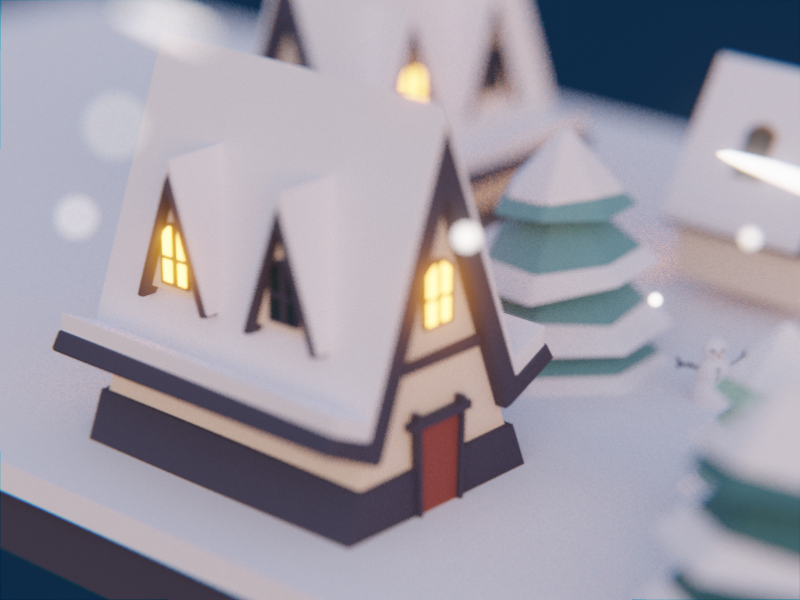
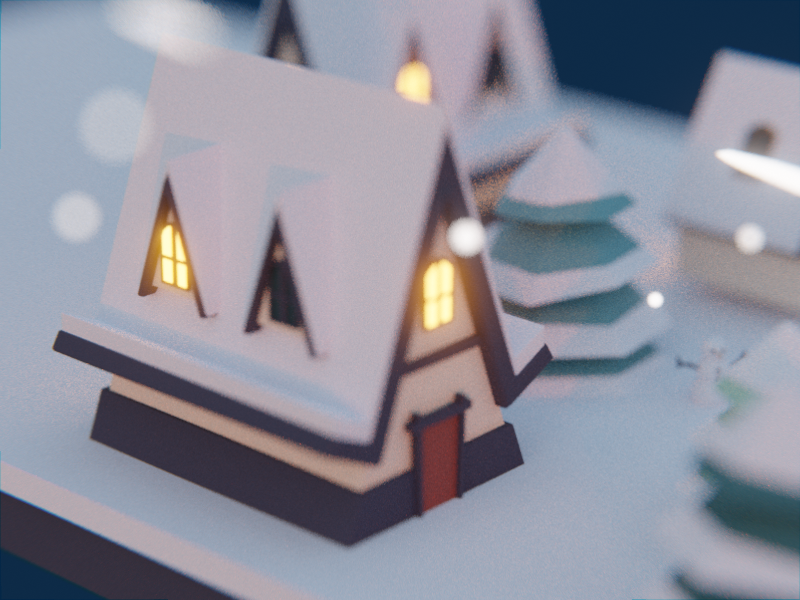
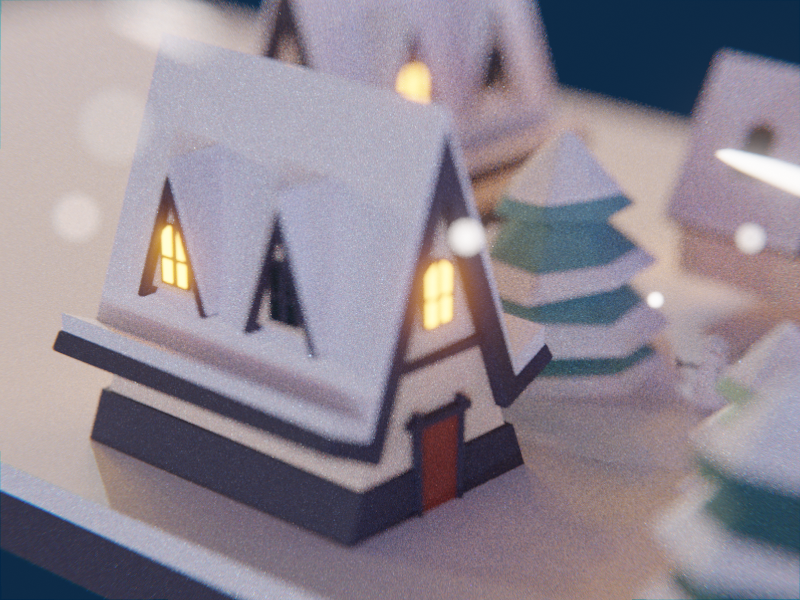
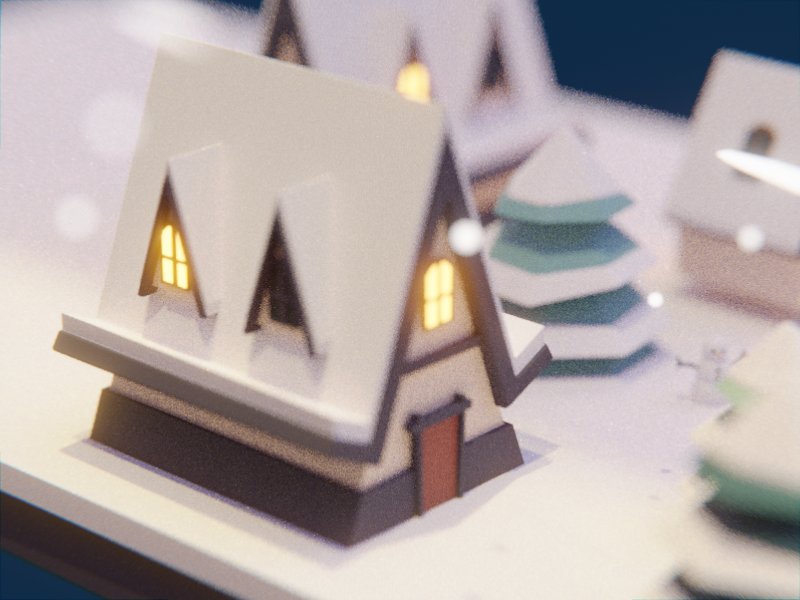
Music
For the music, the main inspiration is the single greatest piece of Christmas music ever composed… The Frost Moon theme by Resonance Array for Terraria. The intro for my piece is almost a transcription of the Frost Moon’s intro.
Tone Colours
Sleigh bells as hi-hats. That’s all you need, really. But the other elements are:
- The main bell, made by layering tubular bells and a celesta
- A woodwind section
- Tuba bass line
- Pizzicatto rhythm and bass line
- Harp used for ending the chorus sections, the break, and melody in the final third of the song
- Alto saxophone used for the melody in the final third of the song
Harmony, Melody, and Structure
The song is in C major (unsurprisingly) and broken down into the following sections:
- The intro, based on the Frost Moon theme.
- Verses 1 and 2 are influenced by Andrew Huang’s “You Make Winter Warm” with twelve bars in ii V I (Dm G C) and four bars in ii iii IV V (Dm Em F G). There’s no real melody here, with the high-end built from the woodwind harmonies.
- The choruses which are eight bars of I Imaj7 IV IV6 (C Cmaj7 F Dm7b5) with the melody played in triplets by the woodwind section, and a syncopated harmony. The choruses are finished with rolled harp chords.
- The four bar break before the second chorus which has harp chords and a pizzicato rhythm
- Verse 3 which has the same harmonies as the other verses but with call and response melodies by the harp and the saxophone.
- The outro which is a climax of the song that brings together all instruments to play melodies over the chorus harmonic structure.
